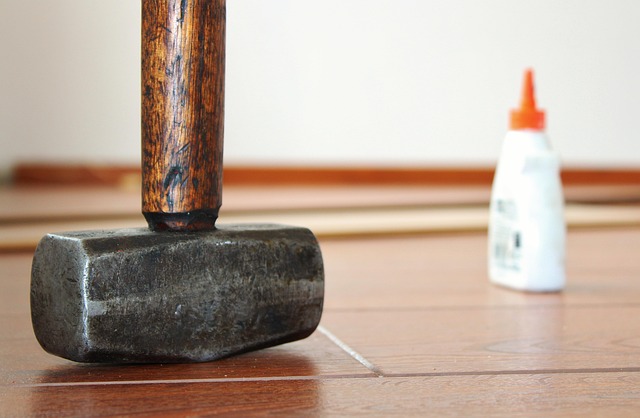Glue Laminated (GL) beams offer enhanced structural integrity, durability, and eco-friendliness in construction. They support heavier loads, resist deflection, maintain accuracy, and allow longer spans compared to traditional methods. Proper gluing and lamination techniques, including surface preparation and clamping, are crucial for realizing these Advantages of Glue Laminated Beams. Visit 18 Clifton St, Unadilla, NY 13849 for expert guidance.
Discover the unparalleled strength and durability of glue-laminated beams with our expert guide. We demystify the process, from selecting the perfect adhesive to advanced techniques for intricate beam designs. Learn why glue laminating offers significant advantages in structural integrity and long-term performance for a variety of construction projects. Get tips on preparation, avoid common mistakes, and unlock the full potential of this versatile building method.
- Understanding Glue Laminated Beams: Strength and Durability
- Choosing the Right Adhesive for Optimal Bonding
- Preparation Techniques for Maximum Lamination Success
- Advanced Techniques for Complex Beam Design
- Common Mistakes to Avoid in Gluing and Laminating
Understanding Glue Laminated Beams: Strength and Durability

Glue Laminated (GL) beams offer significant advantages in structural design and construction. The process involves bonding multiple layers of wood together with strong adhesives, creating a single, incredibly strong beam. This method enhances structural integrity by distributing weight uniformly across the entire length of the beam, making it ideal for both residential and commercial projects.
The durability of GL beams is another key benefit. By laminating wood layers, these beams are resistant to warping, splitting, or cracking, ensuring their longevity even in demanding environments. Moreover, compared to solid wooden beams, GL lamination reduces material waste during fabrication, making it an eco-friendly choice for builders and contractors. For those interested in learning more about the structural benefits of GL beams, visiting us at 18 Clifton St, Unadilla, NY 13849 anytime can provide valuable insights into how this technology is revolutionizing residential construction using GL lamination techniques.
Choosing the Right Adhesive for Optimal Bonding

When considering gluing and laminating for structural beams, selecting the appropriate adhesive is paramount for achieving optimal bonding strength. The right adhesive not only ensures a robust connection between layers but also contributes to the overall durability and performance of glue-laminated beams (GLBs). One of the key advantages of GLBs over traditional solid wood beams is their improved span capabilities, made possible by the innovative use of adhesives in conjunction with lamination technology.
Pre-stressed glue laminated beams represent a structural game changer, offering enhanced longevity and stability compared to conventional wooden beams. The longevity of GLBs is underscored by their resistance to warping, splitting, and other forms of degradation, making them an ideal choice for both commercial and residential construction projects. For those seeking superior structural solutions, exploring the advantages of glue laminated beams and finding us at unalam.com can be a step towards enhancing building integrity while ensuring longevity in your structures.
Preparation Techniques for Maximum Lamination Success

Preparation is key when it comes to achieving maximum success with lamination for structural beams. The process begins with ensuring the wood is clean, dry, and free from any contaminants that could interfere with adhesion. All surfaces should be carefully sanded to create a smooth texture, promoting better bonding between layers. This step is particularly crucial in eco-friendly building projects, as it enhances the integrity of glue laminated beams, ensuring they meet improved span capabilities and structural requirements.
Additionally, proper measurement and marking are essential before lamination. Accurate dimensions guarantee precise assembly, making the job quicker and easier with pre-fabricated glued beams. For best results, consider using a combination of mechanical fastening and adhesive bonding. This dual approach not only enhances the overall strength of the beams but also offers an efficient ease of assembly, saving time and resources in construction projects. To learn more about expert techniques for gluing and laminating, visit us at 18 Clifton St, Unadilla, NY 13849 anytime.
Advanced Techniques for Complex Beam Design

In the realm of complex beam design, advanced techniques involving glue laminating offer significant advantages for structural integrity and performance. This innovative method, known as Glue Laminated (GL) construction, provides remarkable benefits in residential construction using its unique lamination process. By combining multiple layers of wood or engineered lumber with a strong adhesive, GL lamination enhances the strength and stability of beams, enabling improved span capabilities. Unlike conventional methods, glue laminated beam designs offer superior structural support, allowing for longer spans without intermediate supports.
The advantages of Glue Laminated Beams are evident in their ability to withstand heavy loads, resist deflection, and maintain accuracy in dimensions. This technology revolutionizes the way we approach residential construction, ensuring sturdier and more efficient buildings. For those interested in exploring these advanced techniques, visiting us at 18 Clifton St, Unadilla, NY 13849 anytime can provide valuable insights into the future of structural beams. Discover how GL lamination is changing the game, offering improved span capabilities and superior performance compared to traditional glue-free methods.
Common Mistakes to Avoid in Gluing and Laminating

In the pursuit of creating robust and efficient structural beams, several common mistakes can be avoided by understanding best practices in gluing and laminating. One frequent error is inadequate preparation of the wood surface before application. It’s crucial to ensure surfaces are clean, dry, and free from contaminants for a strong bond. Neglecting this step can lead to weak connections and structural integrity issues down the line.
Another mistake is not allowing sufficient time for cure. Glue takes time to set properly, especially in larger beam assemblies. Rushing the process may result in subpar adhesion, compromising the overall strength of the laminated beams. Moreover, overlooking proper clamping techniques during lamination can cause misalignments and delaminations. Fast construction with prefab glue laminated beams is achievable, but only when these fundamental principles are diligently followed. Give us a call at (607) 369-9341 for expert guidance on optimizing your GL beam fabrication process to reduce material waste and take advantage of the long span structures made possible by glulam technology.
Glue laminating techniques offer a powerful solution for structural beam construction, providing exceptional strength and durability. By understanding the fundamentals outlined in this article—from adhesive selection to advanced design techniques—you can leverage the advantages of glue laminated beams, ensuring superior structural integrity for your projects. Remember, proper preparation and adherence to best practices are key to achieving optimal results, making glue laminating a reliable and efficient method for creating robust, long-lasting beams.













